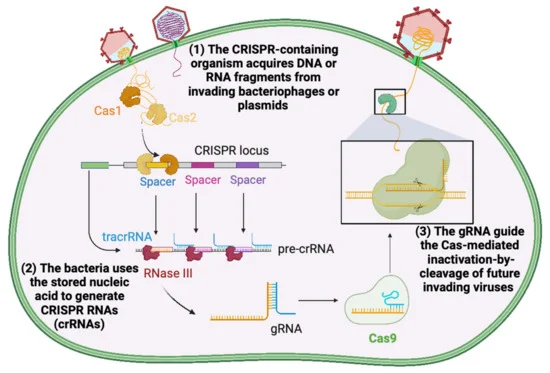Introduction
In today’s fast-paced world, technology has permeated every aspect of our lives, revolutionizing the way we communicate, work, and even how we approach healthcare. Medical technology, in particular, has undergone a remarkable transformation, playing a pivotal role in improving patient care, diagnosis, and treatment. In this article, we will delve into the realm of medical technology, exploring its definition, evolution, and its profound impact on the healthcare industry.
Defining Medical Technology
Medical technology, often referred to as “medtech,” encompasses a wide range of innovative tools, devices, equipment, and software that are designed to enhance the delivery of healthcare services. These technologies are intended to improve patient outcomes, streamline medical processes, and contribute to the overall efficiency of healthcare systems.
At its core, medical technology serves the dual purpose of aiding healthcare professionals in diagnosing and treating patients while simultaneously improving the patient’s experience and quality of life. This multifaceted approach to healthcare has given rise to a diverse array of medical devices and systems, each tailored to address specific medical needs.
The Evolution of Medical Technology
The journey of medical technology dates back centuries, with innovations continually shaping the field. Here, we’ll take a brief look at its evolution:
Ancient Beginnings: Medical technology has humble origins, with the use of rudimentary tools like scalpels and forceps in ancient surgical procedures. These early instruments laid the foundation for future advancements.
The Renaissance Period: The Renaissance period saw significant progress in anatomy and surgical techniques, with pioneers like Leonardo da Vinci making detailed anatomical sketches. This period marked the beginning of systematic study and documentation of medical procedures.
The 19th Century: The 19th century witnessed groundbreaking developments, including the discovery of anesthesia and the invention of the stethoscope. These innovations transformed the way medical professionals diagnosed and treated patients.
The 20th Century: The 20th century ushered in an era of rapid technological advancement in medicine. X-rays, antibiotics, and the development of the first pacemaker were just a few of the milestones that revolutionized patient care.
The Digital Age: The 21st century has brought about a digital revolution in healthcare. Electronic health records (EHRs), telemedicine, wearable health devices, and artificial intelligence (AI) are some of the transformative technologies shaping the modern healthcare landscape.
Key Technologies in Modern Medical Practice
Today, medical technology encompasses an extensive range of innovations. Here are some key technologies that are shaping modern medical practice:
Telemedicine: Telemedicine allows patients to consult with healthcare professionals remotely, breaking down geographical barriers and increasing access to healthcare services. It has played a vital role during the COVID-19 pandemic by enabling safe and efficient medical consultations.
Artificial Intelligence (AI): AI has made significant inroads in healthcare, with applications ranging from diagnostic tools to predictive analytics. Machine learning algorithms can analyze medical data, identify patterns, and assist in early disease detection.
Medical Imaging: Advanced imaging technologies, such as magnetic resonance imaging (MRI), computed tomography (CT) scans, and ultrasound, provide detailed images of the body’s internal structures, aiding in the diagnosis and treatment planning for various medical conditions.
Robotic Surgery: Robotic-assisted surgical systems have enhanced precision and minimally invasive procedures. Surgeons can control robotic arms with high precision, reducing recovery times and improving patient outcomes.
The Impact of Medical Technology
The integration of technology into healthcare has brought about numerous benefits, positively impacting both patients and healthcare professionals:
Enhanced Diagnosis: Advanced diagnostic tools and imaging technologies allow for earlier and more accurate disease detection. This leads to more effective treatments and improved patient outcomes.
Streamlined Treatment: Robotics and AI-driven surgical tools improve the precision and efficiency of medical procedures. Minimally invasive surgeries reduce patient discomfort and speed up recovery times.
Remote Monitoring: Wearable devices and remote monitoring systems enable healthcare providers to track patients’ health continuously. This is particularly valuable for managing chronic conditions and elderly patients.
Efficiency and Cost Reduction: Electronic health records (EHRs) digitize patient information, making it easily accessible to healthcare providers. This streamlines administrative tasks and reduces the likelihood of errors. Additionally, telemedicine can reduce the cost and time associated with in-person visits.
Challenges and Ethical Considerations
While medical technology offers tremendous promise, it also presents several challenges and ethical considerations:
Data Privacy: The collection and storage of vast amounts of patient data raise concerns about privacy and data security. Safeguarding patient information is paramount to maintaining trust in healthcare systems.
Access Disparities: Not everyone has equal access to advanced medical technologies. Addressing disparities in healthcare access is crucial to ensure that these innovations benefit all members of society.
Regulation and Safety: The rapid pace of technological advancement sometimes outpaces regulatory frameworks. Ensuring the safety and efficacy of medical devices and technologies is an ongoing challenge.
The Future of Medical Technology
The future of medical technology holds even more promise. As technology continues to advance, we can expect to see:
Personalized Medicine: Tailoring treatments to individual genetic profiles and medical histories will become more common, leading to more effective and targeted therapies.
Nanotechnology: Nanoscale devices and therapies will allow for precise and minimally invasive treatments at the cellular level.
Gene Editing: Advancements in gene editing technologies, such as CRISPR-Cas9, may offer potential cures for genetic diseases.
Telehealth Expansion: Telemedicine will continue to evolve, providing greater access to healthcare for people in remote or underserved areas.
Conclusion
Medical technology has come a long way from its humble beginnings, shaping the landscape of healthcare as we know it today. From telemedicine to AI-driven diagnostics, these innovations have improved patient care, increased access to medical services, and ushered in an era of personalized medicine. As technology continues to advance, the future of medical technology holds boundless possibilities for improving the quality of healthcare and ultimately enhancing the lives of patients worldwide.


